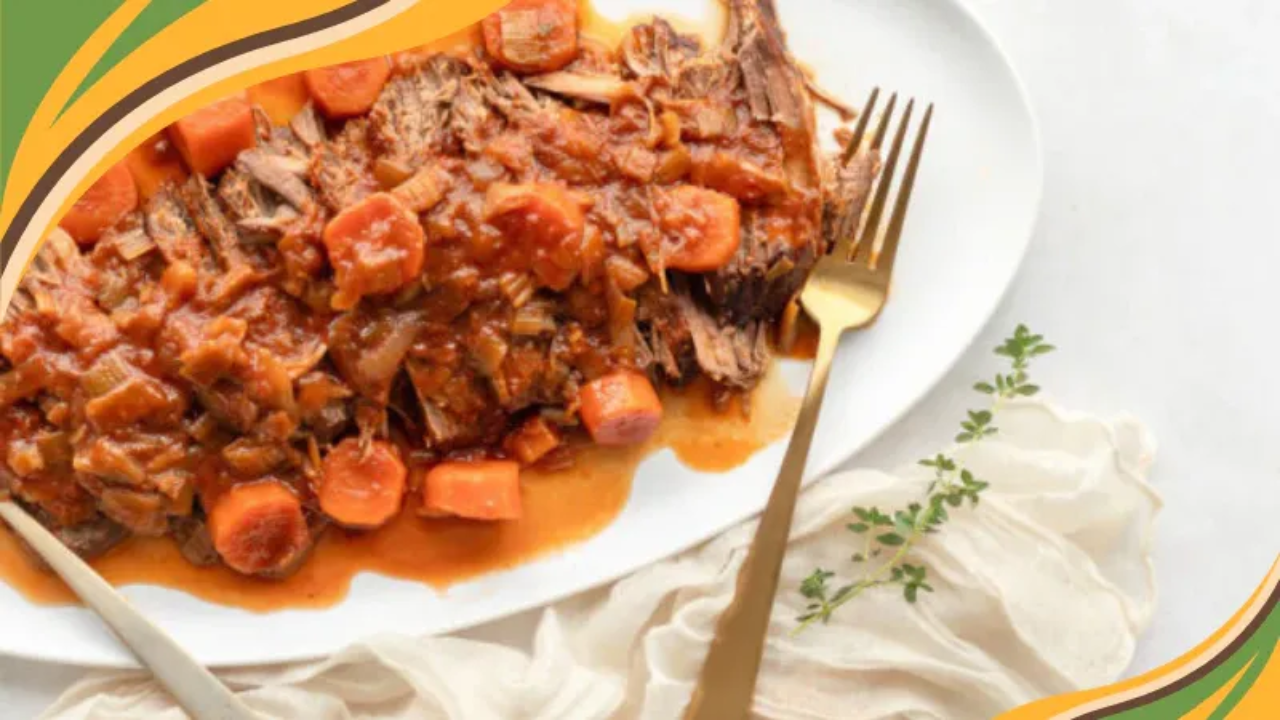What if the secret to successful weight loss isn’t about resisting your cravings, but working with them?
A recent study out of the University of Illinois at Urbana-Champaign flips old diet advice on its head. People who enjoyed small portions of their favorite treats, like chocolate or cake, as part of a balanced meal lost more weight and kept it off longer than those who tried to avoid cravings. This steady approach lined up with simple craving control habits taught early in the program.
Published in the journal Physiology & Behavior, the study followed 30 adults for two years. The program focused on managing cravings, not ignoring them, and showed how basic craving control can support lasting results.
The key finding was clear. Learning how to reduce and manage cravings early in the journey created long-term success and made progress easier to maintain.
Not all hunger Is created equal
Regular hunger can be eased with many foods. Cravings work differently. They lock onto specific, calorie-dense options like sweets, salty snacks, or comfort foods. For many women, cravings become the biggest roadblocks.
Resisting cravings often backfires. It leads to overeating later. Including small portions of craved foods inside balanced meals became one of the most effective craving control tools in the study.
Results that last
Over 24 months, participants who lost more than 5 percent of their body weight had fewer cravings and lower craving intensity. These changes held steady for a full year after the program ended. Simple craving control habits played a big part in this shift.
Participants who practiced craving control in the first six months were far more likely to keep their weight off. Early strategies made long-term results easier.
A smarter strategy
One simple technique stood out. Instead of cutting out favorite foods, include them with intention.
Rather than banning brownies, participants enjoyed a small portion with a balanced meal. This approach lowered cravings more than strict avoidance. It also supported stronger weight loss.
By the one-year mark, two thirds of the group still used this strategy. Many said it helped them stay focused, avoid impulsive snacking, and keep their eating patterns steady.
Why does this work?
Researchers believe the biological shift may connect to better insulin sensitivity as body fat decreases. This affects dopamine, which shapes the feeling of reward around food.
Stress also played a role. Participants with higher stress had stronger cravings. When stress dropped, cravings eased. Adding simple stress-reduction habits made cravings easier to manage.
Bottom line: Moderation over deprivation
Long-term success grows from intention, not denial. A small treat inside a balanced meal can reduce cravings and support a calmer relationship with food.
It’s not about beating the brownie. It’s about knowing when and how to enjoy it.
Here’s to eating with awareness, laughing often, and letting progress, not perfection, lead the way.
#block-1727184909450 { margin-top: 0px; margin-right: 0px; margin-bottom: 0px; margin-left: 0px; } #block-1727184909450 .block { border: 4px black; border-radius: 4px; padding: 0px; padding: 0px; padding-top: 0px; padding-right: 0px; padding-bottom: 0px; padding-left: 0px; } @media (min-width: 768px) { #block-1727184909450 { margin-top: 0px; margin-right: 0px; margin-bottom: 0px; margin-left: 0px; } #block-1727184909450 .block { padding: 0px; padding-top: 0px; padding-right: 0px; padding-bottom: 0px; padding-left: 0px; } } @media (max-width: 767px) { #block-1727184909450 { text-align: left; } } #block-1577982541036_0 .btn { margin-top: 1rem; } #block-1727185134252 { padding: 0; } #block-1727185134252 { margin-top: 0px; margin-right: 0px; margin-bottom: 0px; margin-left: 0px; } #block-1727185134252 .block { border: 4px black; border-radius: 0px; padding: 0px; padding: 0; padding-top: 0px; padding-right: 0px; padding-bottom: 0px; padding-left: 0px; } @media (min-width: 768px) { #block-1727185134252 { margin-top: 0px; margin-right: 0px; margin-bottom: 0px; margin-left: 0px; } #block-1727185134252 .block { padding: 0; padding-top: 0px; padding-right: 0px; padding-bottom: 0px; padding-left: 0px; } } @media (max-width: 767px) { #block-1727185134252 { text-align: ; } } #block-1727185134252 .block, [data-slick-id="1727185134252"] .block { display: flex; justify-content: flex-start; } #block-1727185134252 .image, [data-slick-id="1727185134252"] .image { width: 100%; overflow: hidden; border-radius: 4px; } #block-1727185134252 .image__image, [data-slick-id="1727185134252"] .image__image { width: 100%; } #block-1727185134252 .image__overlay, [data-slick-id="1727185134252"] .image__overlay { opacity: 0; background-color: #fff; border-radius: 4px; } #block-1727185134252 .image__overlay-text, [data-slick-id="1727185134252"] .image__overlay-text { color: !important; } @media (min-width: 768px) { #block-1727185134252 .block, [data-slick-id="1727185134252"] .block { display: flex; justify-content: flex-end; } #block-1727185134252 .image__overlay, [data-slick-id="1727185134252"] .image__overlay { opacity: 0; } #block-1727185134252 .image__overlay:hover { opacity: 1; } } #block-1727185644866 { margin-top: 0px; margin-right: 0px; margin-bottom: 0px; margin-left: 0px; } #block-1727185644866 .block { border: 4px black; border-radius: 4px; padding: 0px; padding: 0px; padding-top: 0px; padding-right: 0px; padding-bottom: 0px; padding-left: 0px; } @media (min-width: 768px) { #block-1727185644866 { margin-top: 0px; margin-right: 0px; margin-bottom: 0px; margin-left: 0px; } #block-1727185644866 .block { padding: 0px; padding-top: 0px; padding-right: 0px; padding-bottom: 0px; padding-left: 0px; } } @media (max-width: 767px) { #block-1727185644866 { text-align: left; } } #block-1577982541036_0 .btn { margin-top: 1rem; } #block-1727194750874 { margin-top: 0px; margin-right: 0px; margin-bottom: 0px; margin-left: 0px; } #block-1727194750874 .block { border: 4px black; border-radius: 4px; padding: 0px; padding: 0px; padding-top: 0px; padding-right: 0px; padding-bottom: 0px; padding-left: 0px; } @media (min-width: 768px) { #block-1727194750874 { margin-top: 0px; margin-right: 0px; margin-bottom: 0px; margin-left: 0px; } #block-1727194750874 .block { padding: 0px; padding-top: 0px; padding-right: 0px; padding-bottom: 0px; padding-left: 0px; } } @media (max-width: 767px) { #block-1727194750874 { text-align: left; } } #block-1577982541036_0 .btn { margin-top: 1rem; } #block-1727186031166 { margin-top: 0px; margin-right: 0px; margin-bottom: 0px; margin-left: 0px; } #block-1727186031166 .block { border: 4px black; border-radius: 0px; padding: 0px; padding: 0; padding-top: 0px; padding-right: 0px; padding-bottom: 0px; padding-left: 0px; } @media (min-width: 768px) { #block-1727186031166 { margin-top: 0px; margin-right: 0px; margin-bottom: 0px; margin-left: 0px; } #block-1727186031166 .block { padding: 0; padding-top: 0px; padding-right: 0px; padding-bottom: 0px; padding-left: 0px; } } @media (max-width: 767px) { #block-1727186031166 { text-align: ; } } #block-1727186031166 .block, [data-slick-id="1727186031166"] .block { display: flex; justify-content: flex-start; } #block-1727186031166 .image, [data-slick-id="1727186031166"] .image { width: 100%; overflow: hidden; border-radius: 4px; } #block-1727186031166 .image__image, [data-slick-id="1727186031166"] .image__image { width: 100%; } #block-1727186031166 .image__overlay, [data-slick-id="1727186031166"] .image__overlay { opacity: 0; background-color: #fff; border-radius: 4px; } #block-1727186031166 .image__overlay-text, [data-slick-id="1727186031166"] .image__overlay-text { color: !important; } @media (min-width: 768px) { #block-1727186031166 .block, [data-slick-id="1727186031166"] .block { display: flex; justify-content: center; } #block-1727186031166 .image__overlay, [data-slick-id="1727186031166"] .image__overlay { opacity: 0; } #block-1727186031166 .image__overlay:hover { opacity: 1; } } #block-1727185879024 { margin-top: 0px; margin-right: 0px; margin-bottom: 0px; margin-left: 0px; } #block-1727185879024 .block { border: 4px black; border-radius: 4px; padding: 0px; padding: 0px; padding-top: 0px; padding-right: 0px; padding-bottom: 0px; padding-left: 0px; } @media (min-width: 768px) { #block-1727185879024 { margin-top: 0px; margin-right: 0px; margin-bottom: 0px; margin-left: 0px; } #block-1727185879024 .block { padding: 0px; padding-top: 0px; padding-right: 0px; padding-bottom: 0px; padding-left: 0px; } } @media (max-width: 767px) { #block-1727185879024 { text-align: left; } } #block-1577982541036_0 .btn { margin-top: 1rem; } #block-1727186222210 { margin-top: 0px; margin-right: 0px; margin-bottom: 0px; margin-left: 0px; } #block-1727186222210 .block { border: 2px solid #2d5d44; border-radius: 4px; background-color: #719949; padding: 0px; padding: 0px; padding: 0px; padding-top: 0px; padding-right: 0px; padding-bottom: 0px; padding-left: 0px; } @media (min-width: 768px) { #block-1727186222210 { margin-top: 0px; margin-right: 0px; margin-bottom: 0px; margin-left: 0px; } #block-1727186222210 .block { padding: 0px; padding: 0px; padding-top: 15px; padding-right: 15px; padding-bottom: 15px; padding-left: 15px; } } @media (max-width: 767px) { #block-1727186222210 { text-align: left; } } #block-1577982541036_0 .btn { margin-top: 1rem; } .awesomecontainer .row .block-type--accordion { align-self: flex-start; }
Stay connected with news and updates!
Join our mailing list to receive the latest news and updates from our team.
Don't worry, your information will not be shared.
We hate SPAM. We will never sell your information, for any reason.














